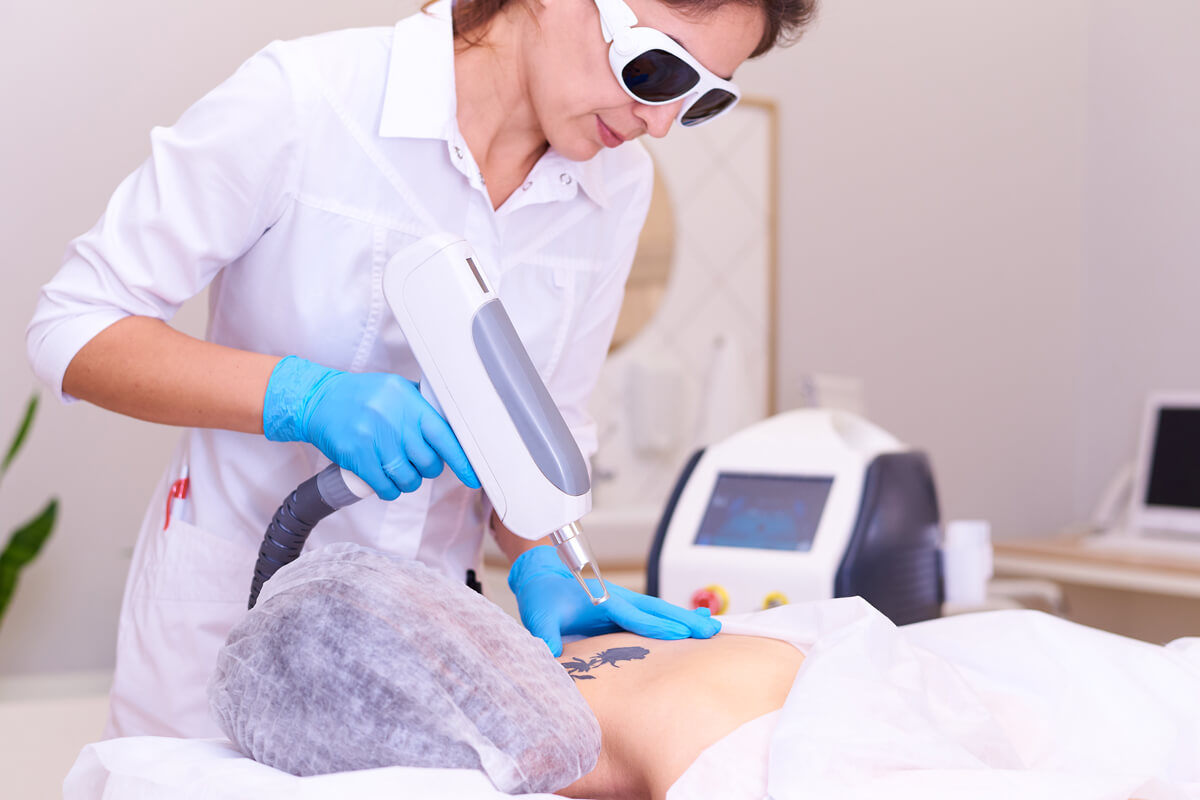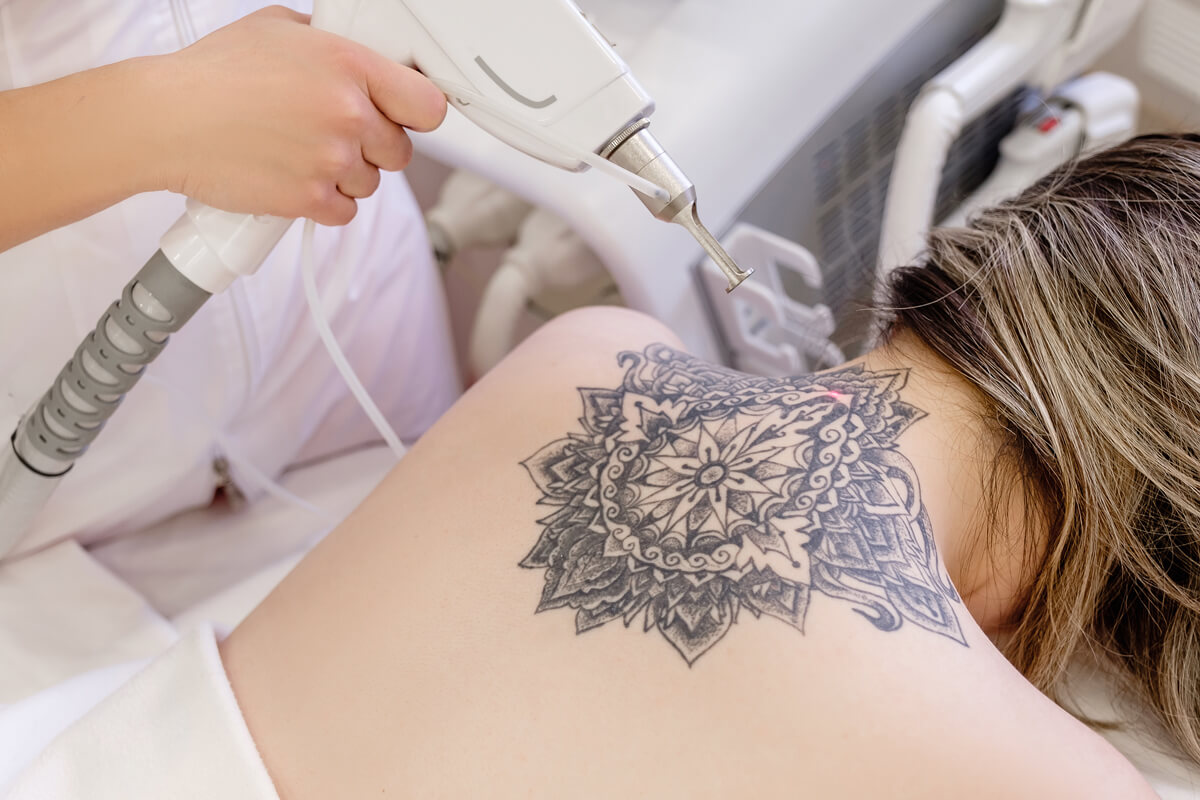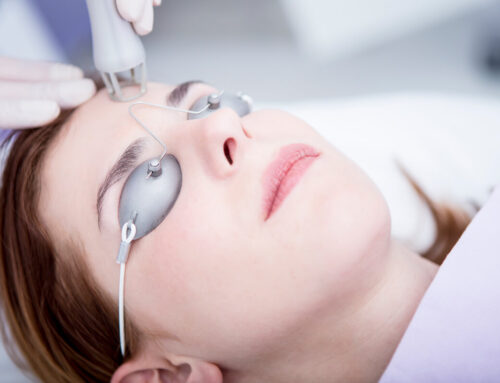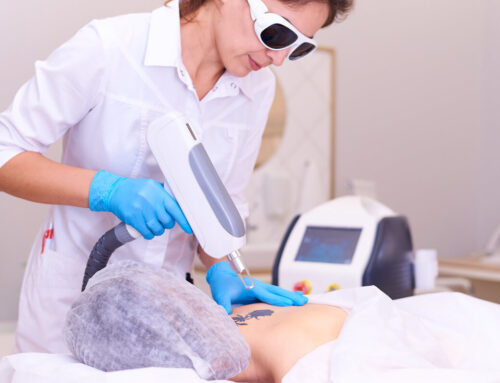Removing a tattoo typically requires 10–12 sessions, with 6-8 weeks in between each session. However, not all tattoos can be completely removed. In this article, you can learn more about how long it takes to get a tattoo completely removed. If you want to learn more about Picoway laser, please, click here.
How Many Sessions Are Needed to Remove a Tattoo?
Typically, 10–12 Treatments. Due to our extensive experience, we can confidently say that most tattoos can be removed in 10–12 sessions. When deciding on full tattoo removal, there are some limitations and factors. A client may need fewer sessions, 9 instead of 10 – 12 to achieve complete removal. Other clients may need more than 12 sessions.
What Should I Consider Before a Total Tattoo Removal?
Not all tattoos on everyone can achieve complete removal. Skin types are categorized by a numerical value using the Fitzpatrick Scale. To lower the risk of hypopigmentation, or the loss of melanin, making the skin lighter than the baseline of the surrounding area, those with skin types 1 to 3 will be more suitable for full removal. Contrarily, those with skin types 4 to 6 can only remove certain tattoo colors.
Cover-up or redone tattoos will probably take longer to remove because the ink density is layered into the dermis. Similarly, it may be more difficult to completely remove tattoos on people who have scars from when the tattoo was applied due to the thick scar tissue. Although complete removal is not guaranteed, laser tattoo removal may reduce some scarring.
Some pigments and colors may change color or intensity during removal, making removing the tattoo difficult. For instance, tattoo artists frequently combine their ink with white ink to achieve the desired color. The darker ink pigment may fade due to the color mixing, but there is also a chance that the white ink may oxidize, which could impact the removal process.
Due to the amount of pigment in the skin, large pieces heavily saturated and larger than a standard sheet of paper, such as a full coverage half sleeve, chest pieces, and back pieces, are frequently challenging to remove completely. As an alternative, these clients are frequently advised to use fading removal services to replace the outdated material and obtain a new cover.
The location of the tattoo will affect how quickly or slowly the pigment fades, and older tattoos do not always fade more quickly than newer tattoos. Tattoos near the heart and circulatory system typically fade slightly more quickly than tattoos farther away from the heart.

How Long Does Tattoo Removal Take?
It typically takes between 10 and 12 sessions for about two years to see full removal results. The number of treatments needed will depend on your skin type, the ink’s density, the tattoo’s location, and your general health. Smokers are urged to quit smoking because it will affect their outcomes. A tattoo can take a long time to remove. Unexpected events such as bad weather, accidental sunburns, and illnesses are also considered when estimating the two-year time frame. We recommend that you avoid the sun, heat, and swimming for ten days after treatment if you want complete tattoo removal. If you must work outside and cannot avoid the sun, we advise covering up the tattoo or delaying your removal sessions until the fall.
Can I Receive Treatments at Shorter Intervals?
No. Laser tattoo removal works by shattering the ink particles for your body’s immune system to metabolize them naturally. For the laser to effectively target a new layer and produce the best results, your body needs time between sessions to remove the particles. The established protocols require a gap of 6 to 8 weeks between appointments. However, the expert might need more time between sessions depending on how well your removal is going. Your removal will be more successful if you go longer between sessions.
Will The Tattoo Completely Disappear?
With time and additional sessions, you might be able to achieve a tattoo that is entirely gone, but this is not a guarantee. We consider the tattoo fully removed for more clients when 90 – 95% of the pigment has been removed. Each tattoo will react differently to treatments and the immune system’s capacity to remove it. Therefore, individuals will experience different results. Most people you meet for the first time, interact with at the grocery store, or sit across from at dinner will most likely not even be aware that you have a tattoo because 90 – 95% of the pigment has been removed. After your laser treatment, a close friend, coworker, significant other, or family member might still notice tiny, noticeably faded dots of pigment. For most clients whose aim is complete removal, this is known as ghosting and is regarded as an acceptable level of removal.
How Soon Can a Tattoo Be Removed?
Very quick. Most laser treatments last less than ten minutes.
What Other Options Do I Have?
Having the tattoo faded for a cover-up is an alternative to a complete removal. It typically takes 3-5 sessions to achieve enough fading for your tattoo to be covered. Anyone with a large, heavily saturated tattoo or a previously covered section should consider this a great option. The tattoo will fade, giving the artists a bigger canvas and more chances to create the best tattoo they can.
Want to Get That Tattoo Removed?
Thinking about removing your tattoo? Visit us at Eye Candy Vision and Beauty Clinic, Arcadia, today. Our Picoway laser will make your treatment quick and painless. We will be eager to work with you!
MEDICAL ADVICE DISCLAIMER: All content in this blog and description including: information, opinions, content, references and links is for informational purposes only. The Author does not provide any medical advice on the Site. Accessing, viewing, reading or otherwise using this content does NOT create a physician-patient relationship between you and its’ author. Providing personal or medical information to the Principal author does not create a physician-patient rela-tionship between you and the Principal author or authors. Nothing contained in this blog or it’s description is intended to establish a physician-patient relationship, to replace the services of a trained physician or health care professional, or otherwise to be a substitute for professional medical advice, diagnosis, or treatment. You should consult a licensed physician or appropriately-credentialed health care worker in your community in all matters relating to your health.




